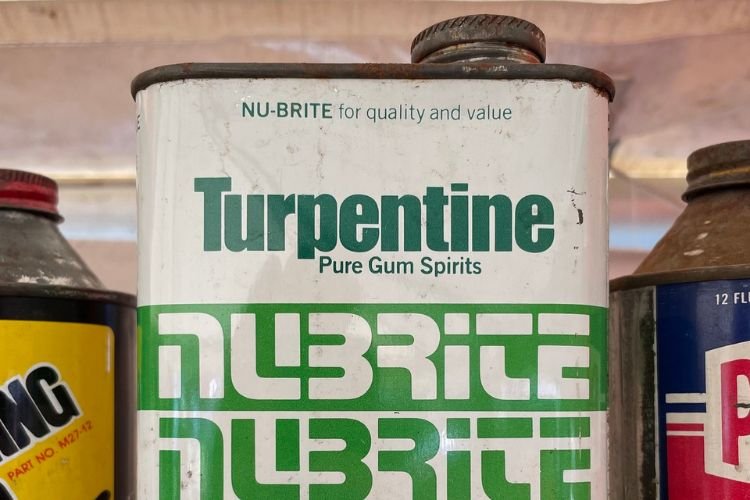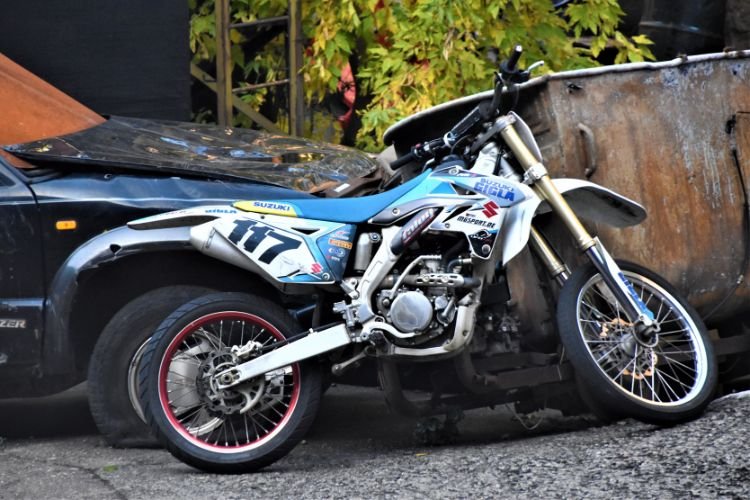How do you communicate while snowboarding? Which is the best way to communicate with others while on the snowboard slope? Snowboarding is an exhilarating sport that combines the thrill of speed with the beauty of nature. But, maintaining communication with friends or partners on the slopes is hard. This is also a challenge to many […]

How To Clean Dirt Bike Air Filter | Most Complete Guide 2023
Air. It is one of 3 elements needed in an internal burning engine. Any type of air will do, for a short time, however if you want to enjoy a long relationship with your dirt bike it needs clean air. This calls for maintenance to keep the air streaming. On-street bikes it is easy, draw the filter out and change it with another. For dirt bikes that see dirt task, it's a more engaged process.
Servicing the air filter on a street bike is as simple as locating the filter, removing it, checking for an excellent seal as well as no dirt or dust behind the filter, and appearing a new one. Typically, the filters are paper, however can likewise be a gauze type. Either way, the process is much easier than a foam air filter, like those used in motorcycles, adventure bikes, as well as even some other street bike auto racing applications. In this guide, we will discuss foam air filter maintenance and also how to clean dirt bike air filter.
Table of Contents
What Occurs If You Have A Filthy Dirt Bike Filter
With a gently filthy air filter, your dirt bike can lose engine power. The filter is the portal in between fresh oxygen your engine requires properly burn the gas, allowing in the air while stopping dust from getting into your chambers.
Getting rid of several of the air will certainly diminish several of the power of your engine. In a much more extreme filthy situation, a broken air filter can even allow debris and also bits to your combustion chambers, a large problem you wish to stay clear of. So, keep your dirt bike functioning successfully and safely. Whether you have a cruiser or like sporting activity bikes, your air filter needs altering or cleansing on a normal upkeep cycle.

Types Of Air Filters
There are three primary sorts of motorcycle filters: paper filters, foam filters, and also cotton filters.
Paper filters are the conventional stock components that come with the majority of sorts of motorbikes. Paper filters are a popular alternative because they are not just economical, however you literally can not clean them. You throw them and also replace them with a new filter when the time comes.
The downside of paper filters is that they do not eliminate as many particles as foam or cotton filters. If you ride a dirt bike, live on a dust roadway, or want to boost your engine efficiency, opting for a foam or cotton filter is a much better idea.
The exception with stock filters is often in off-road bikes when foam filters are normally the standard. Foam filters are wonderful for reusability because they can get cleaned regularly. The downside with foam is that it can be so dense that it will certainly not permit fairly as much air movement. This reduced breathability gets even worse when these filters end up being unclean, needing more constant cleaning. Foam filters expense in between a variety of paper and also cotton and also normally run between $10 and $20 for a foam filter.
Cotton filters are typically taken into consideration premium since they permit many airflows yet also can be cleansed and also reused. Cotton filters are understood for lasting thousands of hundreds of miles if you preserve them appropriately.
The adverse side of a cotton filter is the problem associated with cleaning it effectively and also the price. You will usually require a cleansing liquid as well as oil for these filters. Most of the manufacturers of cotton filters have kits available to cleanse them with the proper products. Cotton filters likewise run anywhere from $20 to $60 and up.
Clean Dirt Bike Air Filter Step-by-Step
One of the most essential parts of the dirt bike is the air filter, which quits dirt, sand as well as other contaminants from reaching the engine and potentially triggering damage. It can only do its job properly if it is kept clean.
To be sincere, this isn't a hard work, however there are a few vital actions you don't want to miss or improvisate on. Do not worry, I'll allow you know when we get to those. Now let's start our foam filter cleaning journey.
There are a few things you'll need to assist clean up the air filter:
- 2 Pairs of latex gloves
- Turpentine
- Detergent/filter cleaner
- Plastic bag (zip lock more suitable).
- Filter oil
- Grease

1. Get Rid Of The Air Filter
Get rid of the seat to make sure that you can get to and see the air filter inside of the air box and then get rid of the preserving screw and washer.
Currently, you will certainly be able to completely remove the air filter from the air box. You will likewise want to remove the framework that holds the foam and maintains it fit.
2. Examine Air Filter For Damages
With the air filter foam out and also devoid of the frame as well as the air box, you should examine it for any damages. You are trying to find any type of split that appears, tears (regardless of just how small) in the foam, deteriorating rubber seal, and so on. If you discover any kind of, I highly recommend you throw the foam filter away and also invest the $20-30 to purchase a brand-new air filter.
If the filter looks excellent, proceed with cleansing it. If it's not, no need to spend the moment cleansing something that you're going to simply throw away.
3. Apply The Turpentine
The first stage of cleansing the air filter involves eliminating all the old oil which will be all through the filter Turpentine is a good option as it will break down the oil on the filter. After applying the turpentine, squeeze the air filter until the liquid has actually gone throughout it, then give it a great press to eliminate the unclean remnants. You may need to do this action a few times to eliminate as much oil as possible.
4. Clean the air filter
After cleansing with turpentine, it's time to give the air filter a clean. Dishwashing liquid/detergent is the favored option as it will eat through the oil, leading to a cleaner air filter. After washing the air filter, make certain to let it dry for a while so that no water is left in it.
5. Tidy the Air Filter Frame & Air Box
While the foam is drying, clean the structure that holds the foam as well. Relying on exactly how filthy it is, you might have the ability to escape utilizing simply the soap as well as water mix.
Additionally, you'll want to examine the air box and very carefully clean it out tidy. Make sure not to enable dust or debris to fall down into it.
6. Oil the air filter
Put your tidy, dry filter within a plastic bag as well as tip some new filter oil onto it. Press the oil with the filter till it has entirely changed color, adding more to any kind of dry, unoiled locations. Air takes the path of least resistance so excellent coverage is crucial.
Make sure you oil the filter completely with a top-quality foam filter oil. There are various methods yet whichever one you utilize, ensure the oil is equally infected in every corner (typically filter oil is a solid color so you can see where spots are lighter and also darker).
7. Grease the air filter
Before reinserting the air filter, use some oil around the edges of the rim, cage or housing, which will assist to develop a tighter seal and also stop dust getting through.
8. Return the air filter
With the above steps total, it's time to return the air filter into the bike. Screw the filter back right into the area, reattach any type of cover, then start up your bike to see how it sounds and also runs.

Air filter myths/don't dos
- Never tidy with any kind of fuel (gasoline, diesel, or other hostile solvents) as this will eliminate the foam and glue in between any type of layering.
- Never leave the filters in the sunlight to completely dry as UV will at some point ruin the foam (obtains hard and splits).
- Do not oil filters that are not completely dry due to the fact that it can create hydrolysis which can break down the foam.
- Spray-on filter oil is alright but generally less thorough for enduro and off-road occasions where challenging conditions for the filter (dust or water) is a bigger factor.
- BIO oils are alright yet more at risk to breaking down as well as allowing water to pass the filter in wet conditions.
- The more "porous" the air filter, the more power you'll obtain. This is a reality but the gains in BHP you might see or find out about with some filters can be just as diverse as a result of how the power on a dyno was determined as well as consistency with testing. Do not trust every little thing you review.
- Covers and also skins are preferred in messy conditions or sand races however they restrict airflow and power. The more layers of foam (or dirt), the much more restrictions there are to air circulation.
- A well-maintained air filter effectively oiled will do its work as well as in the worst of conditions it is far better to change the dirty filter with a fresh one than fit a cover.
Frequently Asked Questions
How Commonly Should You Wash The Dirt Bike Air Filter?
It is recommended that you check your air filter after each ride. Even if it hasn't been a specifically dusty day, if you have been riding sandy or verdant tracks, there is most likely lawn seeds or sand on the filter.
Are All Foam Filters The Same?
The short answer is no. There is a big variation in quality readily available. Typically speaking, you obtain what you pay for. It's difficult to tell by checking out them, it's their long life that differs. A less costly filter is losing its shape after a few washes. A filter with better foam if cleaned and maintained correctly ought to last you regarding one year, depending on just how often you ride.
What Liquid Is Best To Cleanse Dirt Bike Air Filter With?
If you're captured shortly without a unique purpose Air Filter Cleaner, Mineral Turpentine, which is oil-based, is the next best product to clean foam filters with because it is safe for both the foam and also the joint adhesive.
Petroleum-based products will certainly influence the foam as well as make the glue in the seams breakable. Never make use of gasoline or metho. Fuel will certainly puncture the oil much better than any filter cleaner or solvent, but it will eat rubber grommets, seals, as well as adhesives and also break down the foam. after a couple of gas laundries, it will certainly look limp and soggy even when it's dry.
Can I oil it as quickly as it's clean?
It's absolutely crucial that the filter foam is 100% dry prior to you re-oil it.
If there is any kind of dampness left in the foam, it will certainly rot. Allow it completely dry in the sun ideally and preferably allow it completely dry overnight.
How Much Oil Should I Make Use Of?
Oil is colored to make sure that you can see if there is an even spread out in the foam, and you can conveniently see sections not bring the oil. A flawlessly fueled oil filter must just leave a minor residue on your fingers when you touch it. Never wring or twist the filter, just squeeze out as much excess oil as possible.
Spray on oils are offered, however beware of applying also light a coat. For a foam filter to work effectively, the foam should be filled, and after that squeezed out.

Conclusion
Currently, you prepare to ride. The three most important things to bear in mind for preventing premature damage to your engine are:
- Always ride with a clean, fresh air filter.
- Change your oil regularly with good quality oil.
- Always run your dirt bike on the highest octane gas you can obtain.
Today's high-performance bikes require a bit much more attention to keep them in good order. Just by doing these three points you will certainly offer your engine the very best chance for a lengthy and hassle-free run.
How To Make A Dirt Bike Faster? 10 Best Tips You Should Get
Discovering the Ultimate Trail Dirt Bike of 2024

Rodney L is a technical writer and product consultant with over a decade of experience in the motor industry. Rodney is a fan of performance machines that run fast and loud and an expert in all things custom. His numerous articles and write-ups are available at our knowledge base. Whether it’s something wrong with your motorcycle or you are building a custom bike, you can trust Rodney’s experience.
Introduction to motorcycle helmet audio systems As a passionate rider, I understand the thrill of hitting the open road with the wind in your face and the roar of the engine beneath you. However, there's one aspect that can take your riding experience to new heights. That is the ability to enjoy your favorite tunes […]
There is more best motorcycle to motorcycle communication systems than ever in 2024. Riders can seek them much more easily than before. Nowadays, modern intercoms offer crystal-clear audio, long-range capabilities, and seamless integration with helmets. These devices enable riders to stay in touch with their group, listen to music, take calls, and get GPS directions. […]
Do you know what mesh motorcycle communication is? How to choose the best mesh intercom for your motorcycle intercom? Introduction Riding a motorcycle is an exhilarating experience, but communication can be a challenge. In this article, I will lead you to enter the mesh motorcycle communication systems. These innovative technologies allow riders to stay connected […]
Are you tired of searching for motorcycle intercom helm full face options before a riding tour? Look at this test review article! We will share with you the best options to meet all your demands. Introduction Riding a motorcycle offers a thrilling sense of freedom and adventure. However, it can also be isolating. Hence, we […]
Motorcycling is a thrilling experience, offering a sense of freedom unmatched by other modes of transport. However, communication on the road can be challenging. Two way helmet communication systems provide an effective solution, enhancing both safety and enjoyment. Let's see the best 2-way helmet communication devices from Fodsports: Fodsports FX7: Newest Bluetooth mesh intercom for […]

